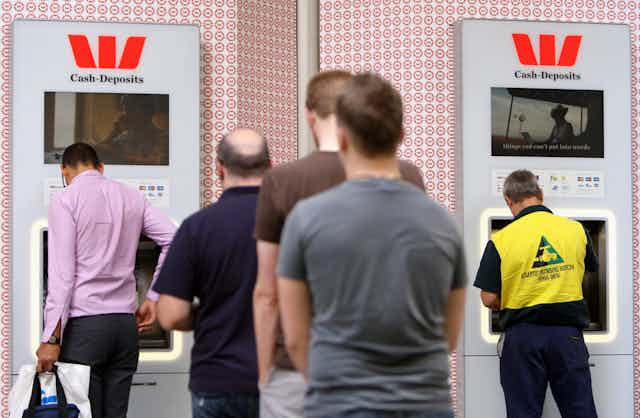In all the noise and fury surrounding the bank tax, a more effective alternative proposal to implementing it has apparently been forgotten. In 2015 South Australian Premier Jay Weatherill proposed that banking should be subject to the GST.
This idea had much sounder economic underpinnings than the current levy, would have raised much more revenue (maybe three to four times), and would have applied to all banks rather than just the big banks. Of course, that last feature would have united the banks in opposition, in contrast to the current divide and (hopefully) conquer approach of Treasurer Morrison.
Unlike other industries, the traditional business of bank deposit taking and lending is exempt from GST. This creates economic distortions and omits a large part of the economy from being taxed.
The omission of banking from the GST is a product of history, because applying it to the banks was seen as too complicated. The reason lies in the nature of the GST as a “value added” tax.
Essentially the 10% tax is added to the sales price of an output good or service, but the seller obtains a GST credit for the tax component of the price of input goods they have bought. The historical view was that it is difficult to identify what are banking sector inputs and outputs, and thus value added.
Is providing a deposit account an input (in making loans) or an output in its own right? And there is generally no explicit fee charged for the service of intermediation between depositors and borrowers, with bank costs and profits covered by the interest rate spread.
The argument that its too complicated is no longer a sufficient justification. At one level the aggregate “value added” by a bank is easy to estimate. It’s the sum of profits and wages. The size of the profits and wage bills of the banks by itself indicates the potential tax revenue foregone and potential economic distortions caused by favourable tax treatment of banking services.
At the product level, while banks receive input tax credits on purchased inputs they do not add a GST cost to the price of deposit or loan products and services. Introducing GST would mean that banks would need to add the tax on their value added to prices charged (directly or implicitly via changes to interest rates) but would be able to utilise the GST credits they currently get on purchased inputs.
The historical complication was determining how much of aggregate value added and various input costs to allocate to each product. How should the cost of bank premises or teller time be allocated between individual deposit and loan customers?
That is a difficult problem. But banking systems of activity based costing, product and divisional profitability have evolved to enable an application of the GST. It might be an imperfect application, but that is arguably a lot better than none at all.
Exempting traditional banking services from GST is a significant cost to tax revenue. But it also creates economic distortions.
One, at an aggregate level, is that banking services get a tax advantage over other forms of economic activity – perhaps helping to partially explain why the financial sector has grown as a share of total GDP.
Another distortion lies in effects on different types of customers. Yes, application of GST to banks would raise the cost of banking services to all customers – since it is unrealistic to expect that this tax, even though effectively levied on bank profits plus wages and salaries, would not be passed on.
But it would mean that business customers would get GST input tax credits on their purchases of banking services to offset against the GST bill on their sales. Households, as consumers would not get that benefit, reducing tax induced distortions to their use of banking services relative to alternative expenditures.
The detail of the GST (including federal – state revenue sharing implications) is a mystery to most people, so it’s easy for counter-arguments to be produced to obfuscate and obstruct the proposal to apply it to banking. But it has merit and warrants serious consideration.
It’s highly unlikely that Treasurer Morrison will want to deal with the fall-out from adding a bank GST impost on top of the “big bank tax”. But perhaps, placing a sunset clause on that and using the lead time to develop a coherent plan for applying GST to banks is worth considering.

